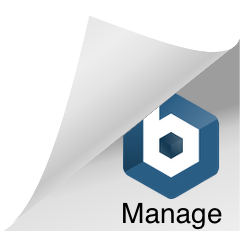Solution:
ACCPAC Pro Series tables are linked via relational fields. Using these relations, any specific transaction can be tracked through a series of tables. This article demonstrates how to track an invoice from the ARMAST table to the ICDIST table.
The key to tracking transaction records through multiple tables is to find the relational fields that link the transactions from one table to another. This article will describe a typical transaction from Accounts Receivable (AR) that will create records in multiple Pro Series tables and describe which fields relate the records together.
Note: Use the Company 99 demo data to follow along.
Create an invoice in the AR module
- Under the Transaction menu, select Enter Invoices/Credit Memos and choose Invoices.
- Enter in a customer into the Customerfield.
- Navigate to the Line Item Detail tab and enter an item into the Item field and order a quantity of one.
- Save the line.
- Enter a second line item and order another item.
- Save the line.
- Save the invoice.
- When prompted, select Proceed and do not choose to pay the invoice.
Open the Data Center
Note: The Data Center is the fifth icon from the left on the Standard Pro Series Toolbar
and is available in Pro Series 7.3. In older versions of Pro Series, a data view must be created
for every table involved in the transaction in order to view the data.
- Select the Data Center icon from the Pro Series toolbar. (see attachment Data1.jpg).
- Expand the Accounts Receivable node and navigate to the ARMAST table. (see attachment Data2.jpg)
- Right-click on the ARMAST table and select Browse Table.(see attachment Data3.jpg)
- Browse to the Invno field. It is the relational field that links the same record in the ARDIST and ARTRAN tables.Note: The values found in the relational fields MUST be the same. Also, notice the number of records for a single transaction differs depending on the table and the transaction.
- The Invno field in the ARMAST table links to the Invno field in ARTRAN. The ARTRAN Invno field relates to the ARDIST Tranno field. (see attachment Data4.jpg and Data5.jpg)Note: The value found in the ARDIST.Tranno field also refers to the ARCASH.Ctranno
field because ARDIST also has records of cash receipt transactions. (see attachment Data5a.jpg)
- Expand the Inventory Control node and navigate to the ICTRAN table. (see attachment Data6.jpg)
- Right-click on the ICTRAN table and select Browse Table. (see attachment Data7.jpg)
- Browse to the Docno field. It is the relational field that links to the Tranno field in ARDIST.Note: The Docno field also references records in the SOMAST table via the Sono field.
The Udref field should be used in conjunction with the Docno field as it will give the source
of the transaction record; whether it was created from a sales order or an invoice directly.
(see attachment Data7a.jpg)
- Also, the Ttranno field in the ICTRAN table will relate to the Tranno field in the ICDIST table. (see attachment Data8.jpg)Note: The Ttranno field in ICTRAN will always be a unique and sequentially incremented
value. Even though ICTRAN holds one record for each line item from the invoice or order, the
value in Ttranno for each record will be unique.
These relational fields will simplify the search process for related records in Pro Series tables. They can be used to sort records in a table or to connect tables for a new data view via a join. The Relations folder, in the Data Center, contains a listing of which tables relate directly with the current table and a reference which field creates the relationship.
© Copyright Sage Software
![]()

